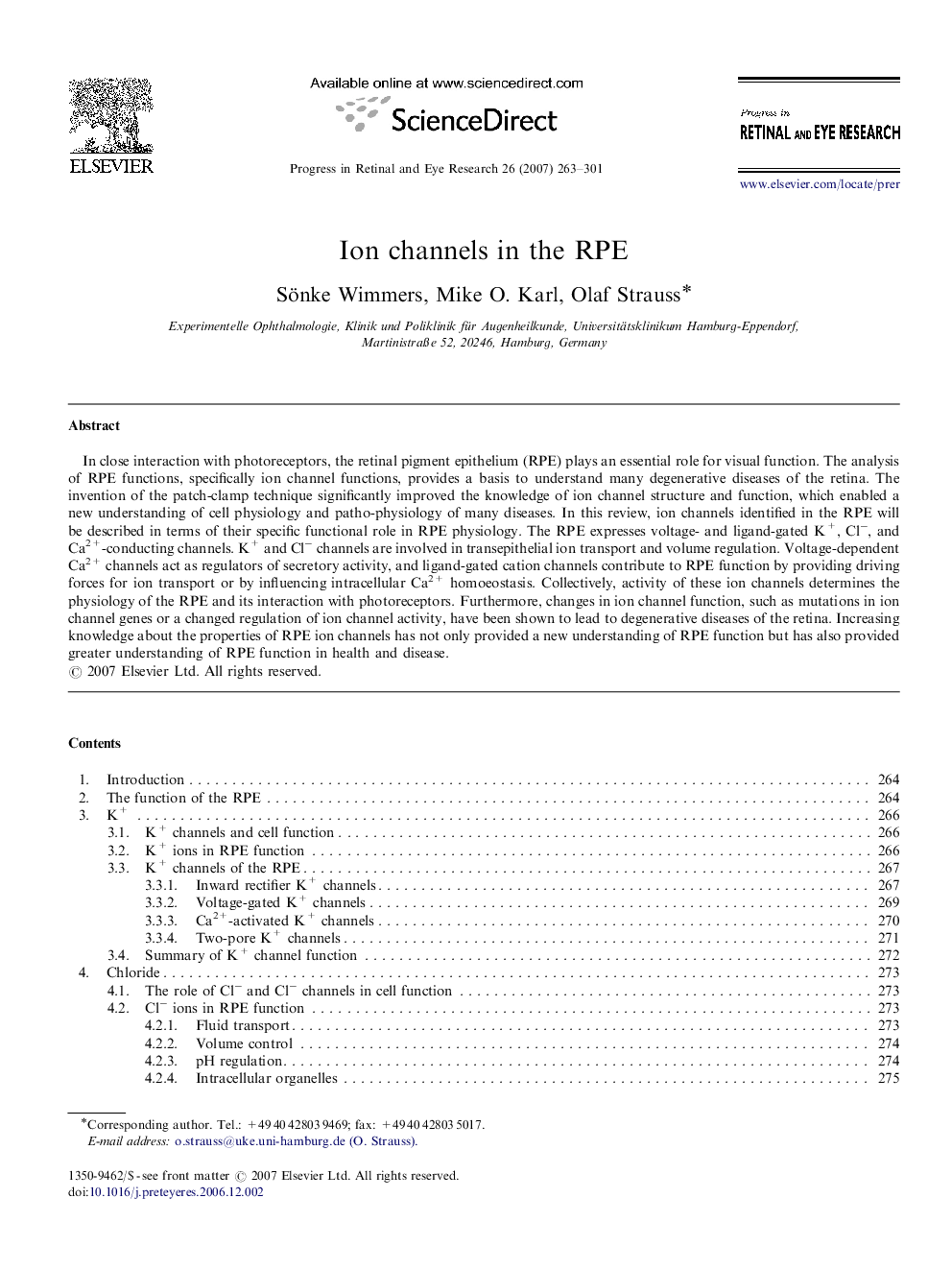| Article ID | Journal | Published Year | Pages | File Type |
|---|---|---|---|---|
| 4032138 | Progress in Retinal and Eye Research | 2007 | 39 Pages |
In close interaction with photoreceptors, the retinal pigment epithelium (RPE) plays an essential role for visual function. The analysis of RPE functions, specifically ion channel functions, provides a basis to understand many degenerative diseases of the retina. The invention of the patch-clamp technique significantly improved the knowledge of ion channel structure and function, which enabled a new understanding of cell physiology and patho-physiology of many diseases. In this review, ion channels identified in the RPE will be described in terms of their specific functional role in RPE physiology. The RPE expresses voltage- and ligand-gated K+, Cl−, and Ca2+-conducting channels. K+ and Cl− channels are involved in transepithelial ion transport and volume regulation. Voltage-dependent Ca2+ channels act as regulators of secretory activity, and ligand-gated cation channels contribute to RPE function by providing driving forces for ion transport or by influencing intracellular Ca2+ homoeostasis. Collectively, activity of these ion channels determines the physiology of the RPE and its interaction with photoreceptors. Furthermore, changes in ion channel function, such as mutations in ion channel genes or a changed regulation of ion channel activity, have been shown to lead to degenerative diseases of the retina. Increasing knowledge about the properties of RPE ion channels has not only provided a new understanding of RPE function but has also provided greater understanding of RPE function in health and disease.
